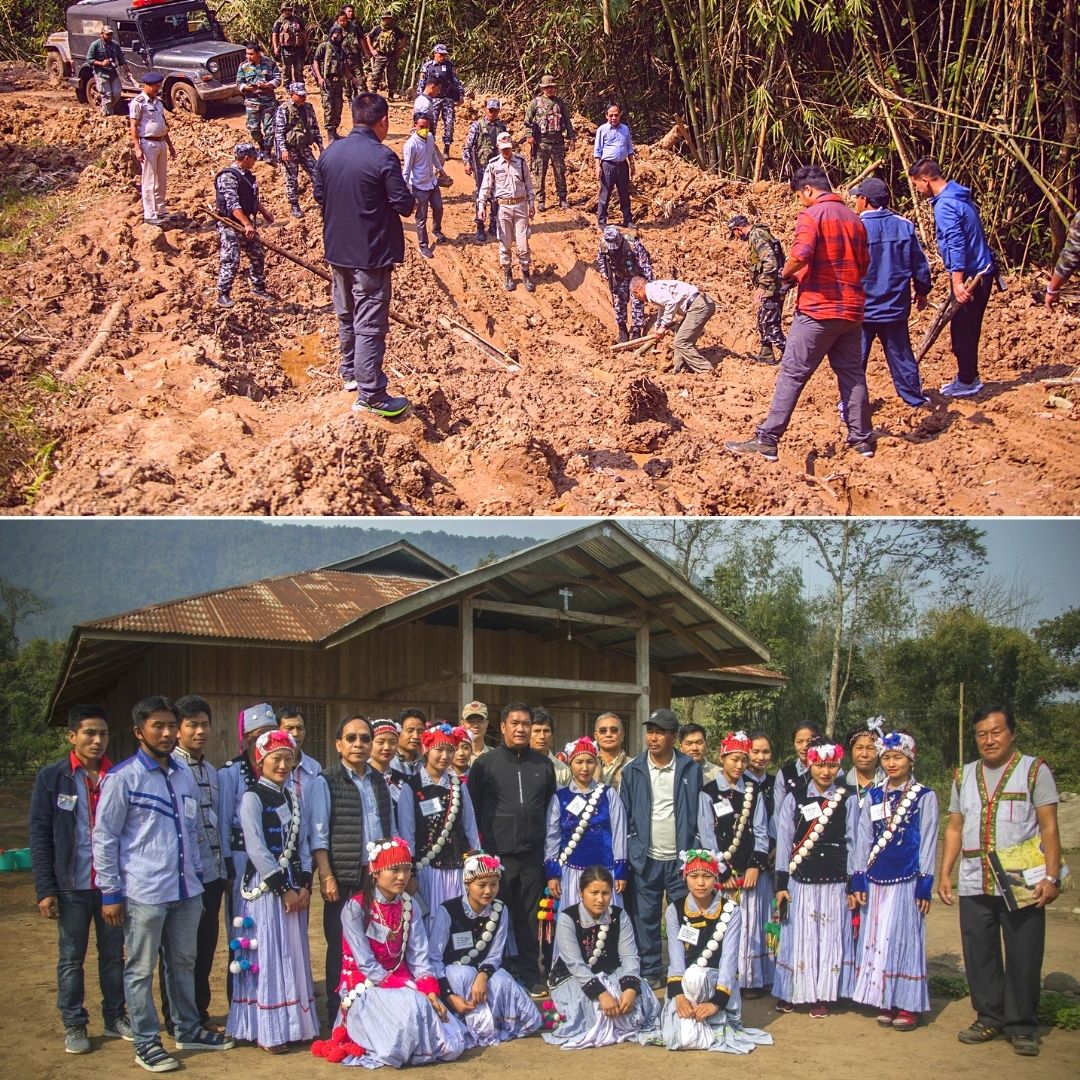
Living In An Isolated Corner Of India Without Connecting Roads For Over 4 Decades: Lisu Tribe
Writer: Mrinalini Kaushik
She is a student of journalism, keen on learning new ways to unlearn, deconstructing news and life. Interested in exploring new media as medium is the message. Avid follower of sports and politics
Arunachal Pradesh, 13 May 2022 1:39 PM GMT | Updated 13 May 2022 1:45 PM GMT
Editor : Shiva Chaudhary |
A post-graduate in Journalism and Mass Communication with relevant skills, specialising in content editing & writing. I believe in the precise dissemination of information based on facts to the public.
Creatives : Shiva Chaudhary
A post-graduate in Journalism and Mass Communication with relevant skills, specialising in content editing & writing. I believe in the precise dissemination of information based on facts to the public.
The tribe belong to a remote corner of Arunachal Pradesh and is speculated to have originated from the Yunnan region in North-Western Tibet in the 18th century. Many describe them as prisoners of geography.
Lisu tribe, also called 'Yobin' in India, live in the most eastern corner of the country in Shidi Valley and Nibodi village of Arunachal Pradesh, surrounded by Namdapha National Park, considered as 'encroachers' in the forests under the Wildlife Protection Act, 1972.
Earlier, the tribe used to live in neighbouring countries such as Myanmar and China. Now, many describe the tribe residing there as prisoners of geography.
Where Did The Lisu Tribe Come From?
The Lisu tribe resides in Shidi Valley, officially known as Gandhiram village, one of the largest Lisu villages. The tribe is speculated to have originated from the Yunnan region in North-Western Tibet in the 18th century and were traditionally slash and burn farmer communities.
It is believed that in the 19th century, they started going towards the south and reached what is now China, India, Myanmar, Laos, and Thailand. They have the largest population in South-West China.
Becoming Part Of India
About 5,000 Lisu tribal people live on Indian soil. The Seventh Assam Rifles regiment reached Gandhiram village on May 7, 1961. They were the first outsiders to have entered Lisu tribal area after Independence. The unit helped draw the international borderlines, working alongside the Lisus. They also informed the tribe that their land was now a part of the Indian territory.
In the 1980s, the Lisu tribe in India was not given the privilege of Indian citizenship, and they were considered refugees from Myanmar and China. By 1994, India granted them citizenship, and in 1950, they were included in the Scheduled Tribes list. However, there was some ambiguity on their status.
Therefore, in 2018, Asghar Ali, Under-Secretary in the Ministry of Tribal Affairs, stated, "Thus, Yobin or any other tribe inhabiting in Arunachal Pradesh is an inclusive tribe, and no separate amendments are required in terms of Article 342(2) of the Constitution of India," as reported by the Sentinal Assam.
Gandhiram: Remotest Areas In India
Lisu tribe was initially displaced from their previous villages in 1964 due to former Governor-General AS Gaurya, who wanted to make those villages a settlement for ex-service people.
The authorities pushed them to Gandhiram, and in 1972, the Gandhiram village area was declared a Wildlife Sanctuary, later becoming the Namdapha National Park in 1983.
The government built a road to connect Gandhiram village with the central part of Arunachal in 1976, but they could not maintain it due to heavy rains and flooding. Thus, the government decided that the area would be better left uninterrupted by roads as it would lessen the chances of poaching and encroachment. Most of the Lisu tribal people have to walk for days and cross the forest areas to reach towns where they can sell their products.
Also Read: This All-Women Led EdTech Company Aims To Create Equal Learning Opportunities Across North East
 All section
All section













